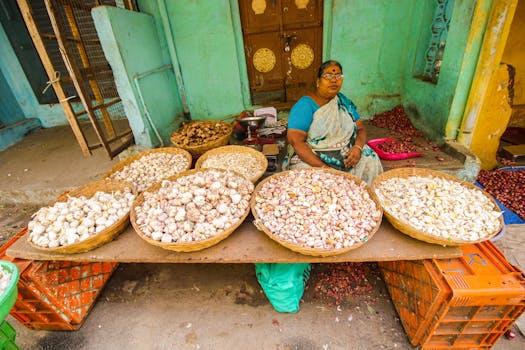Companies with the best and the worst technicals.
Lists of companies in NSE500 with the best and the worst technicals...
Lists of companies in NSE500 with the best and the worst technicals...
Lists of companies in NSE500 with the best and the worst fundamentals...
List of the latest important filings for NSE500....

This article explores the robust growth of the gaming and esports industry...

This article explores how fintech platforms like Jio Payments Bank and PayNearby...

Exploring the growing concerns surrounding widening trade deficits and their impact on...

Akshaya Tritiya, celebrated primarily in India, is a festival that falls on the third day of the waxing moon in the month of Vaisakha, usually around April or May. In 2025, Akshaya Tritiya is set to be observed on April 29, making it a date of importance for both religious observance and business transactions.
For millions of Hindus, Akshaya Tritiya holds profound religious significance. The day is considered highly auspicious and is dedicated to Lord Vishnu, the preserver in Hindu mythology, and Goddess Lakshmi, the deity of wealth and prosperity. According to ancient beliefs, it is said that any new endeavor started on this day is destined to be successful. Famed scriptures suggest that this day is ideal for performing rituals, starting new businesses, conducting weddings, and investing in gold.
Historically, Akshaya Tritiya is associated with the Mahabharata, where it is believed that during this time, Lord Krishna presented the Pandavas with the Akshaya Patra, a vessel that would provide them with unlimited food. As a result, the day signifies endless prosperity and abundance.
The connection between Akshaya Tritiya and business cannot be understated. In India, buying gold on this day has become a tradition that extends across the nation. According to the All India Gems & Jewelry Domestic Council (GJC), gold purchases during Akshaya Tritiya have consistently increased, with expectations for 2025 to set new records.
In 2023, for instance, it was reported that around 25 tons of gold were sold on Akshaya Tritiya, amounting to approximately ₹1,200 crore (around $160 million) in sales. With the increasing reverence towards this day, analysts forecast that sales could reach ₹1,500 crore (about $200 million) by 2025, reflecting a growing trend among consumers seeking to invest in gold as a symbol of wealth and success.
In recent years, consumer behavior during Akshaya Tritiya has evolved significantly. While gold has traditionally been the primary focus, there has been a noticeable shift towards other commodities and investments, including real estate and precious stones. As financial literacy improves and new generations enter the market, the appetite for diverse investment options continues to grow.
Moreover, the advent of e-commerce has transformed how consumers approach their Akshaya Tritiya purchases. Leading jewelers and investment platforms have recognized the trend, launching special online promotions to attract a broader customer base. In 2025, this trend is expected to culminate in a more integrated digital shopping experience, possibly doubling online sales compared to previous years.
Demographic factors also play a significant role in sales forecasts for Akshaya Tritiya in 2025. Younger consumers aged 25-35 are increasingly steering the market, motivated by both tradition and modern investment strategies. A survey conducted by the National Council of Applied Economic Research (NCAER) estimated that nearly 30% of millennials would prefer buying gold digitally, demonstrating shifting attitudes towards traditional purchasing methods.
This emerging demographic trend aligns with the overall socioeconomic growth observed in India, where the economy is projected to grow at a rate of 6.5% in 2025, according to the International Monetary Fund (IMF). Increased disposable incomes will likely fuel spending on auspicious occasions, enhancing the commercial significance of Akshaya Tritiya.
As the date approaches, 2025 will see brands carefully strategizing their marketing approaches around Akshaya Tritiya. A proactive marketing campaign will be crucial in not only promoting gold sales but also educating consumers about the significance of the occasion. Social media platforms and influencer marketing are set to play a pivotal role, utilizing storytelling to highlight the cultural and emotional value behind purchases made on this auspicious day.
Jewelers and manufacturers are also anticipated to launch exclusive collections, offering customized and innovative designs that appeal to modern buyers. The idea of personalized investments could enhance consumer engagement while reinforcing the emotional connection that comes with such traditional purchases.
As Akshaya Tritiya approaches in 2025, the intertwining of religious significance and commercial opportunity will be more pronounced than ever. With stronger buyer behaviors, evolving consumer preferences, and a growing economy, the festival is poised to redefine its role in the business landscape of India.

This article explores the expansion of EdTech companies, particularly Physics Wallah, into...

This article examines the recent scandal involving electric taxi startup BluSmart, where...